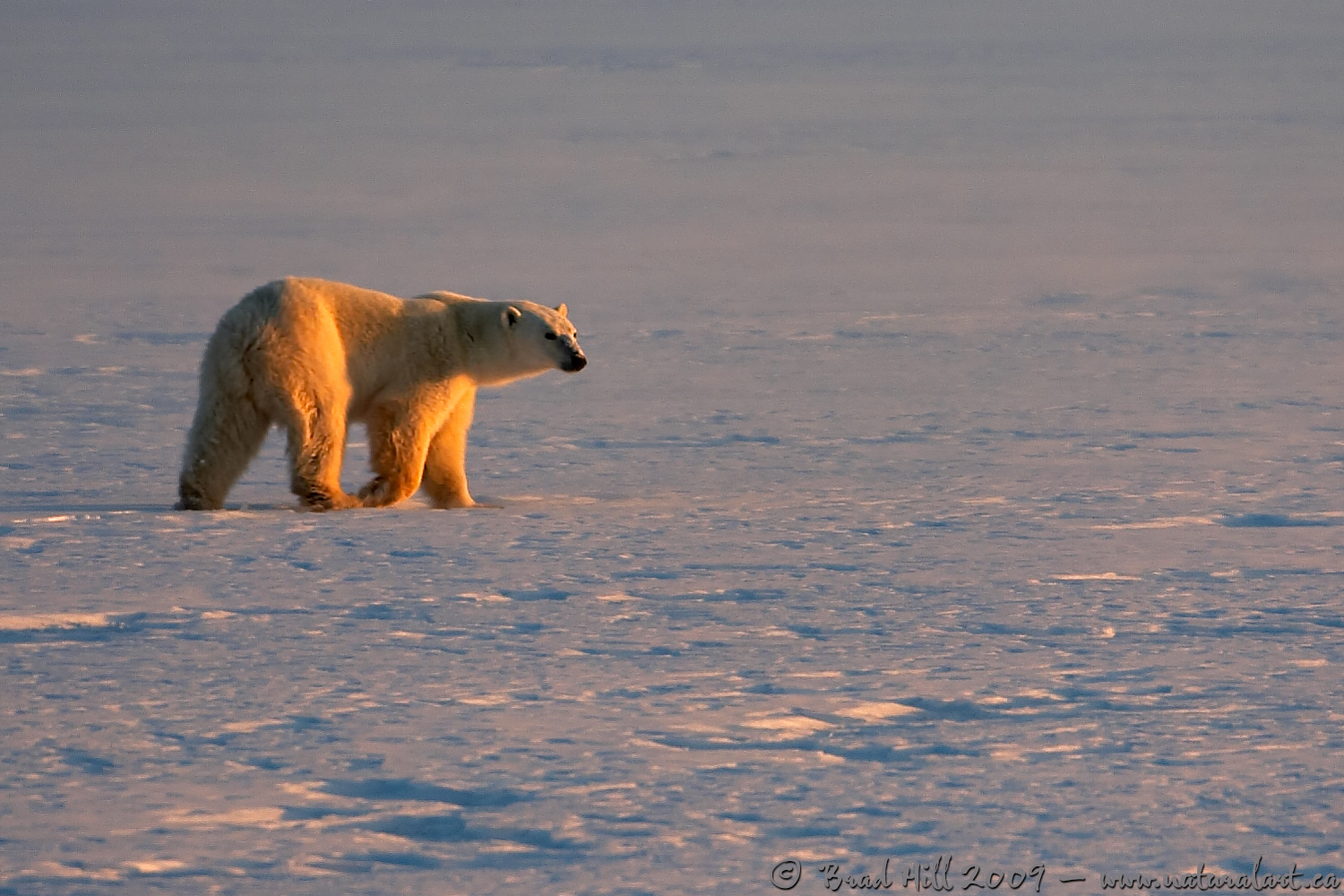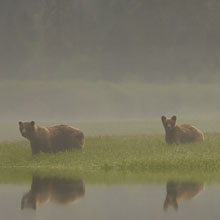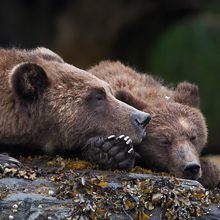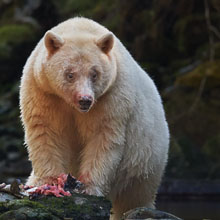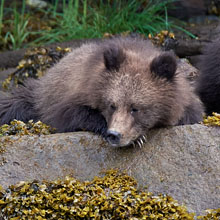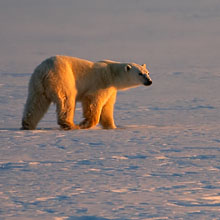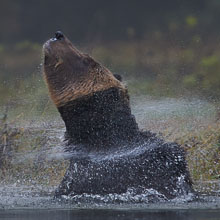Availability: Undetermined - Enquiries?
In the Field
Golden Bear in Arctic Sunrise. Cape Churchill, MB, Canada. October 26, 2004.
After almost a week on the tundra we had seen a lot of Polar Bears, but not the sun. On our last morning the sun came out and, fortunately, so did bears. This adult male turned almost golden as the morning sun came up over the horizon. Over the next ten minutes or so the bear circled completely around us Ü giving us virtually ever light angle possible. I couldn't have designed a better photo opportunity if I tried! It was truly "Walt Disney/Marlin Perkins" moment and I felt very privileged to witness it.
ADDITIONAL NOTES:
1. This image - in all resolutions - is protected by copyright. I'm fine with personal uses of them (including use as desktop backgrounds or screensavers on your own computer), but unauthorized commercial use of the image is prohibited by law. Thanks in advance for respecting my copyright!
2. Like all wildlife images on this website, the subject(s) is/are fully wild and completely unconstrained. Besides the potential impact of my/our presence, nothing has been done to intentionally alter or affect the ongoing behavior of the subject and, of course, there has been no use of any form of bait or other form of wildlife attractants (including vocalizations or other sounds).
Behind the Camera
Golden Bear in Arctic Sunrise. Cape Churchill, MB, Canada. October 26, 2004.
Digital Capture; Compressed RAW (NEF) format; ISO 200.
Nikon D2H with Nikon 200-400 mm f/4G ED-IF AF-S VR lens @ 400 mm (600 mm equivalent with digital conversion factor) supported on bean bag.
1/400s @ f4.5; +0.3 exposure compensation from matrix-metered exposure setting.
At the Computer
Golden Bear in Arctic Sunrise. Cape Churchill, MB, Canada. October 26, 2004.
RAW Conversion to 16-bit TIFF, including first-pass sharpening, using Phase One's C1 Pro. Multiple RAW conversions (at different exposure settings) to extend dynamic range of captured image, in this case to restore shadow detail on side of Polar Bear.
All further digital correction on 16-bit TIFF file using Adobe's Photoshop CS, including compositing and masking of various exposure versions, selective tone curve adjustment, selective saturation enhancement and selective sharpening for web output.
Conservation
Golden Bear in Arctic Sunrise. Cape Churchill, MB, Canada. October 26, 2004.
Ten percent of the revenue generated by this image will be donated to the Yellowstone to Yukon Conservation Initiative.
Species Status in Canada*: Special Concern (November 2002).
Polar Bears (Ursus maritimus) are the largest terrestrial carnivores on the planet and the most carnivorous of all bears. They are highly specialized and feed almost exclusively on Ringed Seals. Polar Bears hunt their prey from ice sheets and are dependent upon these ice sheets for their survival.
Like any highly-specialized organism, Polar Bears are highly susceptible to habitat alteration. Climate change - natural or human-induced - is probably the greatest long-term threat to Polar Bear survival. The longer ice-free seasons experienced in the southern reaches of their distribution is already making it difficult for them to hunt.
The Yellowstone to Yukon (Y2Y) Conservation Initiative seeks to ensure that the world-renowned wilderness, wildlife, native plants, and natural processes of the Yellowstone to Yukon region continue to function as an interconnected web of life, capable of supporting all of its natural and human communities, for current and future generations.
For more information on the status of Polar Bears in Canada, go to: http://www.speciesatrisk.gc.ca and search under "Polar Bears".
*as determined by COSEWIC: The Committee on the Status of Endangered Wildlife in Canada












